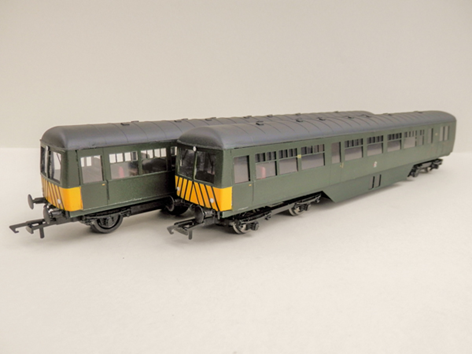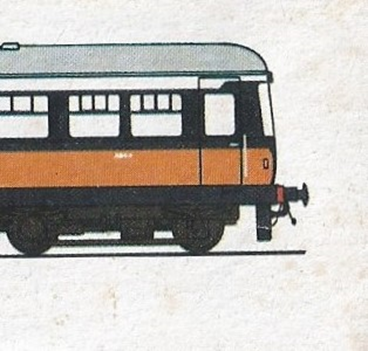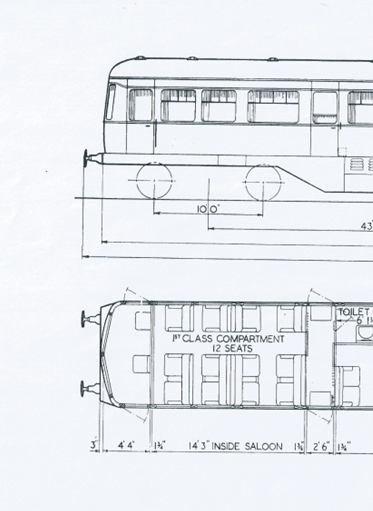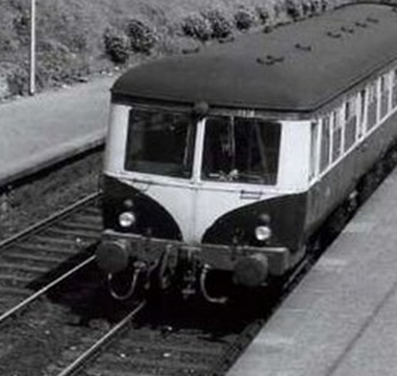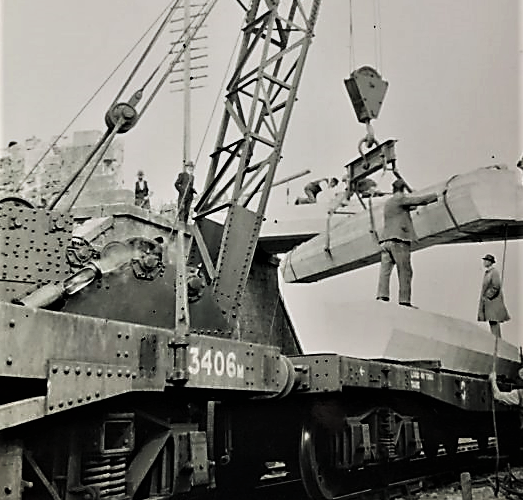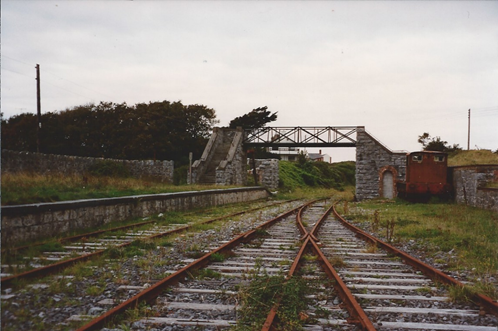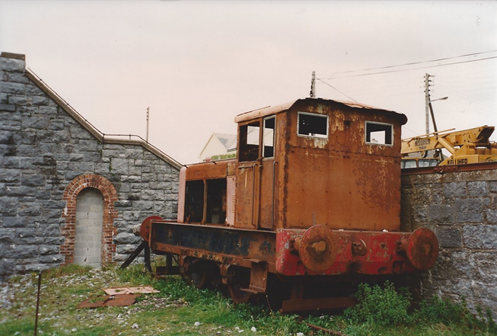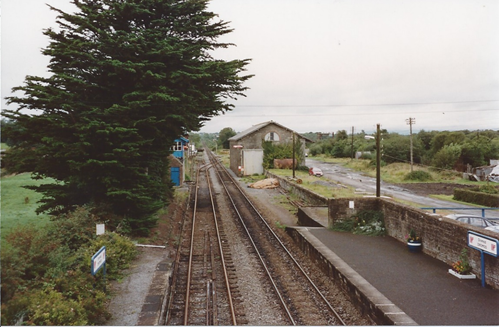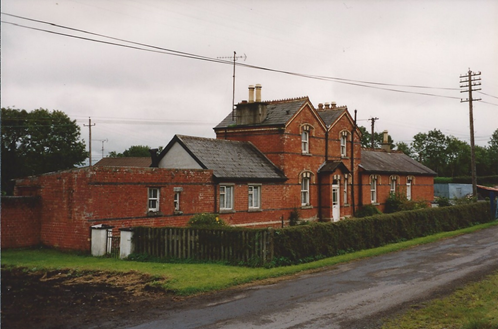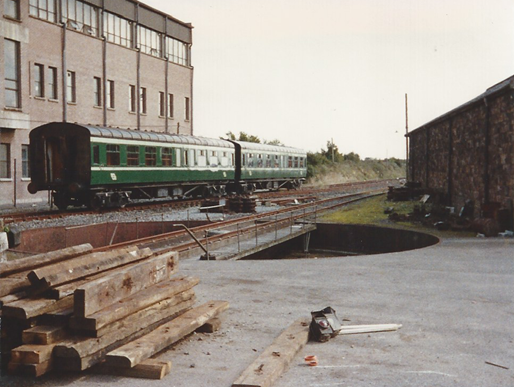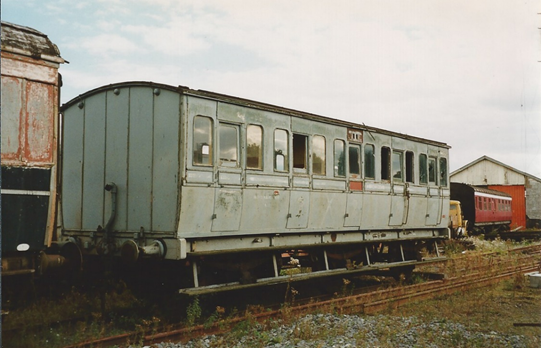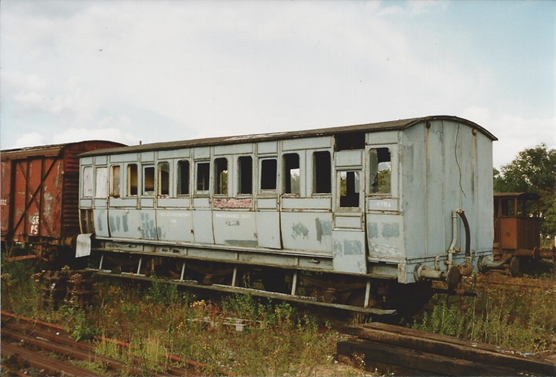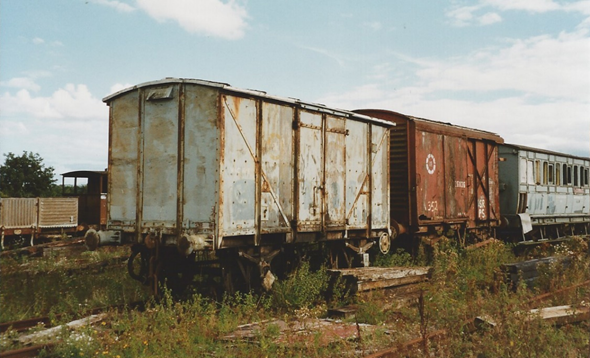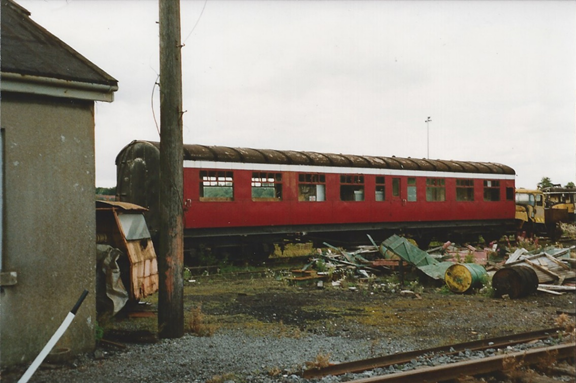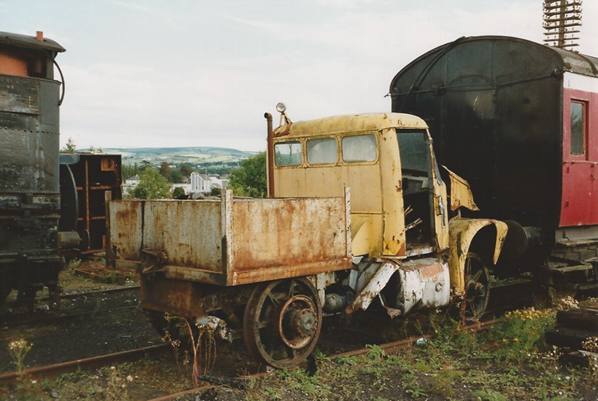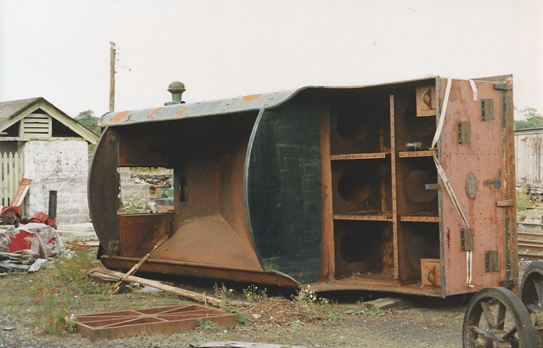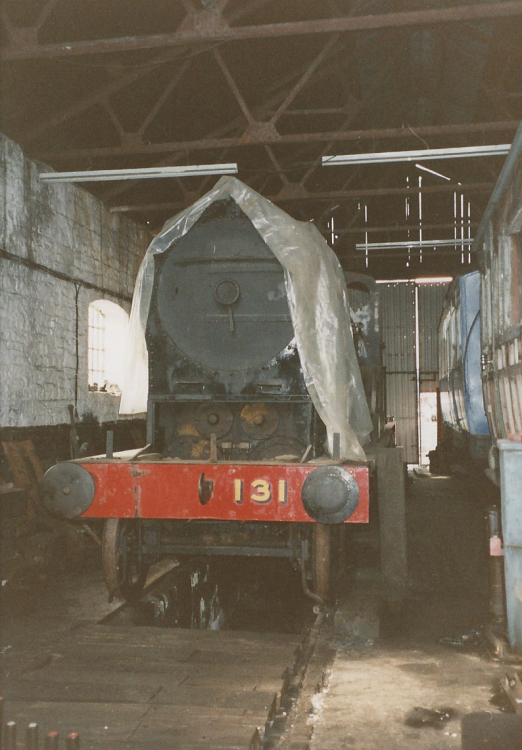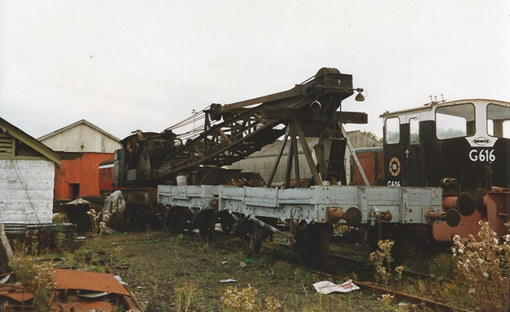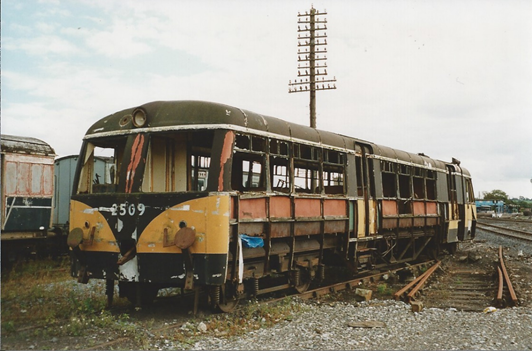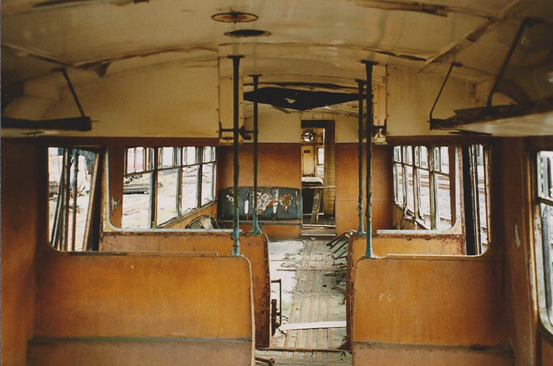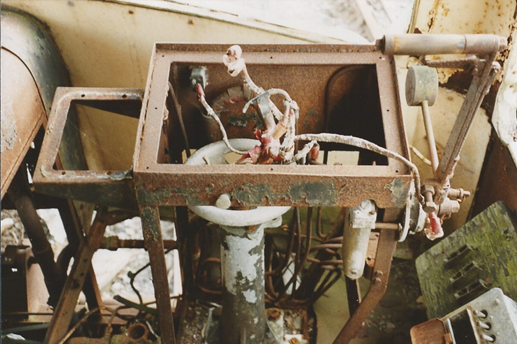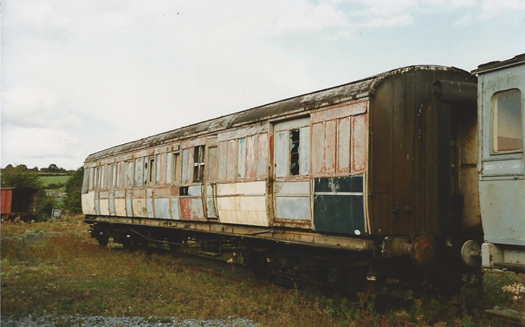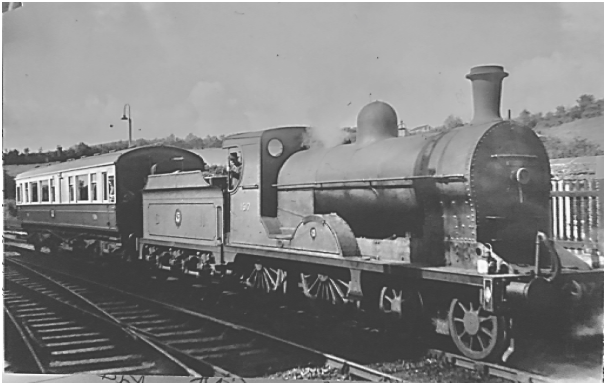-
Posts
433 -
Joined
-
Last visited
-
Days Won
3
Content Type
Profiles
Forums
Events
Gallery
Blogs
Store
Community Map
Everything posted by Lambeg man
-
The problem I have with the otherwise excellent Silver Fox models, is that the front is incorrect. The cab front did not overhang the main chassis and large 2' diameter buffers were a CIE feature, not that of the GNR or the UTA. The correct profile for the front cab was an outward angled middle window bar, bottom of cab windows angled backwards horizontally, gentle but pronounced curve along the cab lower panel. On most models to date (INCLUDING MY OWN!) the front profile is too flat. What may not be apparent in the upper picture but which can be seen better in the lower picture is the amount of buffer beam that was exposed at the outer ends by the curvature of the cab front. Also noticeable in many photographs of these Railcars are the grab handles on the front, one under each cab window. I have asked before, but has anyone a suggestion as to how one might construct a correctly fashioned AEC cab front that could be retro fitted to an aspiring model of one these vehicles?
-
Yes Jon, the 6 x GNR and 4 x UTA 'Royal Train' vehicles were indeed painted in GNR 'Blue/cream' livery but with black ends. See Norman McAdams "GNR Coaching Stock" article in the 1961 Journal. Initially the GNR provided BOTH sets of carriages for the Belfast-Cork "Enterprise" service, but at some later point CIE got their act together and provided a half decent set of more modern carriages as their contribution to the service. However they did not have a modern catering vehicle, so the GNR "lent" No. 124 to them for an extended period. To keep the CIE set looking the part, No. 124 was painted into CIE livery. When she was returned to the GNR (date not known), she was presumably painted back into GNR 'mahogany' livery as she was still a hauled coach until March 1957 when she fitted for BUT operation. Like I said, she is not in GNR 'Railcar' livery in the photo, she is in the unique 'Royal Train' livery. I have not read of any other GNR 'hauled' vehicles getting the 'Royal Train' livery (or similar) other than the six that were in that train. Other photographs showing 'blue/cream' carriages in otherwise 'mahogany' rakes of GNR trains can be confirmed as being Railcar trailers with the 'blue/cream' carried around the ends.
-
Below is part of a photograph taken by H. B. Priestly (published by the Oakwood press in the 2003 New Edition of The GNR(I) book by E.M. Patterson) at Goraghwood. It is dated 16th August 1956. The carriage in the centre of the picture is the classification 'B 9' Buffet Car No. 124. It will be seen that it is in the GNR 'blue & cream' livery, normally applied to Railcars and their fitted trailer vehicles. However No. 124 on this date was NOT fitted to run with any Railcars. Furthermore it is not actually in the GNR 'Railcar' livery (which was carried around the coach ends). It is in the livery applied to the ten carriages that were in the 1953 'Royal Train'. This 'Royal Train' livery had black coach ends as can be seen in the photograph. No. 124 was NOT a vehicle in that train. So how did it end up in this livery? For the record, it was built in 1942 and would have been in GNR 'mahogany' livery from then. Then in 1951 it was painted into CIE's then current 'green' livery for duty on the Belfast-Cork "Enterprise". In March 1957 it was fitted for operation with BUT Railcars and painted up in the full version of the GNR's 'Railcar' livery. It finished up in UTA 'green' livery and was put to use on the Derry Road until that closed. It was last used in February 1965 but not officially withdrawn by NIR until April 1971. As far as is known, it was scrapped while still in UTA 'green' livery'. Any offers?
-
Hi Jon, I had a little play about with the last one. There is a parapet to rear left side of the picture. The beams appear to part of an overbridge renewal. Rear centre two men are kneeling on new beams already put in place. There appear to be another set of rails on the far side of the train, so a two-track section (not necessarily 'double track'). Err, that's it. Can't help any further.
-
The IRRS visit to the Derry Central line using Railcar No. 4 was in 1959. Both Draperstown (picture 1) and Dungiven (picture 2) were long gone by then. I believe they ran from York Road to Kilrea just before that last remnant was finally closed.
-
Jon, My notes record the following AEC (ex-GNR) Railcars getting the narrow band (suburban) version of the 'GN Regional' livery, No's 111, 115 and 117. However No. 118 got the deeper band (express) version. The remaining five, including No. 113 went direct from UTA 'green' to the standard NIR livery. The reason No. 111 was still in the blue/cream livery of 1965 when scrapped I have been informed, was because it had been plundered for spares post 1967, to keep the others running.
-
I think part of the issue regarding the necessity of having a pilot engine in constant use is whether a terminus had locomotive 'Release Roads', i.e. a crossover near the buffers of an arrival platform to allow the locomotive to run around its train or escape to the depot. Most rural termini had such a facility. Taking bigger (urban) stations, Belfast York Road station had no 'engine release roads', the middle tracks between the platform tracks were purely carriage sidings, hence a pilot engine was always in use. Belfast Great Victoria Street station had likewise no 'release' roads. Hence a pilot in steam days, however the locomotive hauling the Dublin based "Enterprise" post 1965 released itself by reversing out of the station into one of two available loops. Belfast Queens Quay station in (B&CDR) steam days has 'release roads' for most platforms, but this was on account of the intensive services they ran. I will stand corrected, but I think I discovered to my own surprise when doing some research on the subject a few years back, that the middle siding at Derry/Londonderry Waterside station, between the two platform tracks, was not an 'engine release road'. Ergo a pilot would have been necessary or did locomotive hauled trains reverse out to a loop? Answers on a postcard..................
-
Sorry to sound pedantic Mayner, but it was Sid Vicious who did the cover of My Way........
-
It appears most of Jonathan Allen's stuff is on E-Bay. You can buy copies of his photographs (which are the same as those on his Flickr account) BUT the selling notice states that the copyright is retained by him.
-
Woah, woah gents, a bit of calm please. I hope this not 'Cabin Fever' creeping in. I think Noel has a point, even if he does not put it very succinctly. Equally I agree with Jason B, if anybody wants something so desperately, then fang up the dosh to start the ball rolling. About ten years ago I gave serious consideration to putting the money up for a RTR GNR(I) 'K 15' open second as there was nothing at that time that could even be easily 'bashed'. My plan was that having equipped my self with a dozen or so, I'd be able to sell the rest. Near research at the time indicated I would have had problems shifting ANY. So I found a massive holiday to New Zealand much more attractive. Like Noel I prefer RTR models to kits. I recently wasted a serious part of my life putting just two Airfix cattle wagon kits together. Maybe with age comes a slight loss of dexterity necessary to put even plastic kits together with an degree of ease. As I get ever nearer to my appointment with the grim reaper, TIME has become more important and therefore a RTR model is more attractive to me personally than a kit. One option, by which another member has achieved an excellent collection of models is buy the kits AND then pay someone else with the ability to put them together. It is by this method that I have come to eventually possess six good models of 'K 15's. There are several 'kit building' services advertised in the Railway Modeller, so if like me you are no good at kit building, then consider this method. That way you will still support the 'wee guys'. This website in the past has run items such as "Members Wish Lists for RTR Irish Models" and all those participating must have realized it was largely 'Fantasy Football' as the market simply is not there, especially for older stuff. A 30 year old coming into the Irish railway modelling scene today is hardly going to pine for a 'Jeep' or a GNR 'Compound'. For my part the course of action is, if you are adverse to kit building, is to buy what excellent RTR stuff is now available (or soon to be) and then base your layout around that rather than "I want to model Clones in the 1950's" - ergo please can someone do a RTR GNR 'PP' class and a range of celestory roofed GNR carriages..... Furthermore I totally agree with DiveController about how apparent spats like this make the website look poor..... [ What? Oh yeah, I got involved. But I think I got away with it..............
-
You are correct Airfixfan. The vehicle in the above photograph entered service in 20/4/1952 as GNR(I) AEC Railcar No. 618. In 1958 it passed to the UTA who renumbered it No. 120. After withdrawal by NIR as a power car in August 1972 it was altered to the un-powered parcels van and renumbered No. 621. It appears it was used entirely on the NCC section, carting parcels between Larne Harbour and Derry/Londonderry. Vacuumed braked as a Railcar, it will be seen in the photograph it has been fitted with air brakes as a parcels van. In the photograph (taken by Jonathan Allen) it is being shunted of the back of a service just arrived from Derry/Londonderry. A similar conversion was carried on the former GNR(I) AEC Railcar No. 606. In 1958 it passed to the UTA who renumbered it No. 114. After withdrawal by NIR as a power car in September 1972 it was altered to a similar un-powered parcels van you see in the photograph and renumbered No. 622. It was likewise withdrawn in 1983. Both vehicles were officially withdrawn in 1983, making them the very last vehicles BUILT FOR the GNR(I) to technically remain in 'company' service.
-
The interior of Victoria Road station (looking along the former platform) after it had been adapted to become a wholesaler's premises. Photograph source: The Northern Ireland Ministry of Finance
-
I know the answer, but the ubbergruppenfruher has forbade me from displaying the answer until we have received more suggestions from people logging on tomorrow....... Good fun these quizzes..... Must remember that 'quizzes' word for Scrabble....
-
mmm
-
Many thanks for the info on the shunter Derailed. That was all news to me. May I ask if you know why was the removal of track so sporadic, i.e. it was still in place at a number of sections and gone in others?
-
Some more pictures from 1990 to give an indication of the size of the task facing the GSRPS 'Fenit' project... A part of the branch, with track entirely removed... I think this was Kilfenora crossing (I may be wrong), but the track obviously still in place... Fenit station itself with track still in situ... Not sure if this shunter was GSRPS property. It was a not a CIE loco. Irish Sugar perhaps?.. View north from Rock Street level crossing in Tralee... View south from the same level crossing. Note that nearly ALL the trackwork from the North Kerry Yard is gone.
-
Dromod in 1990.... View west from the footbridge.... Front of the C&L building, then a private residence.... Trackside view of the same building (obviously without any track)..... Many thanks Airfixfan, I did not recognize the background.
-
Hi JHB, May I ask where the picture of NIR No. 340 was taken? - LBM
-
In 1989 we did a Rover Rail ticket based in Dublin. On one day we made to Tralee where I took these two photographs of what I understood were Tralee-Fenit project carriages.... Over to JHB for comment.....
-
These last few pictures I have no idea what I was photographing..... The grey six-wheelers are TWO different carriages.......... Over to you Jon as to what this lot are.......... Picture 1 Picture 2 Picture 3 Picture 4 Picture 5 Picture 6
-
The saddest sight was that of No. 131.... The tender off a 'U' lying outside.... Close up of the maker's plate on the tender...... I can remember thinking as I took these photographs, why is this project not tied in with the RPSI - a spreading and therefore weakening of precious resources and expertise. As already listed so many preservation schemes in Ireland have failed because unlike in Britain there is not the impetus, talent and DEEP interest for railways (and consequentially the MARKET) nationwide for numerous alternative schemes. On a happier note, over to JHB for the commentary for the next post............
-
I visited Ireland in the autumn of 1990. We traveled by hire car around most of the island (but not into Northern Ireland), visiting numerous railway locations, past and present. What follows are a series of photographs taken on an evening at Mallow station when the GSRPS was in residence. I went up the platform Inspector and asked if I could walk over to the sidings where the stock was stored and he as much said "Go ahead, help yourself". There was no security and everything (apart from No. 131 which was in a shed) was just lying about in the open. I will start with the crane that I think has already been mentioned..... Then the 'G' class shunters mentioned.... Then one end of the ex-SLNCR Railcar 'B'.... Then the other end.... The interior.... And the driving console but from which end I can not recall...... And finally for this post, the ex-GNR 'D 3' Brake/Second with 'BUT' Railcar gangways fitted. This vehicle was rebuilt in 1923 as a Brake/Second. It performed as a trailer for the single 'BUT' Railcar operating the "Enniskillen Express" in 1957. It finished in the Cork Breakdown Train. "Fell asunder" to quote Norman Johnston, when moved to the Belturbet project. More material to follow on a separate post.
-
Thanks Jon. I'm in a mind now to send him some of my older Triang/Hornby, Hornby and a Wrenn steam locomotive chassis/motors to him for a similar re-wheel, re-magnetize and good clean up. The refurbished DMU bogies run like a dream, even without the extra bogie pickups wired in.
.png.c363cdf5c3fb7955cd92a55eb6dbbae0.png)
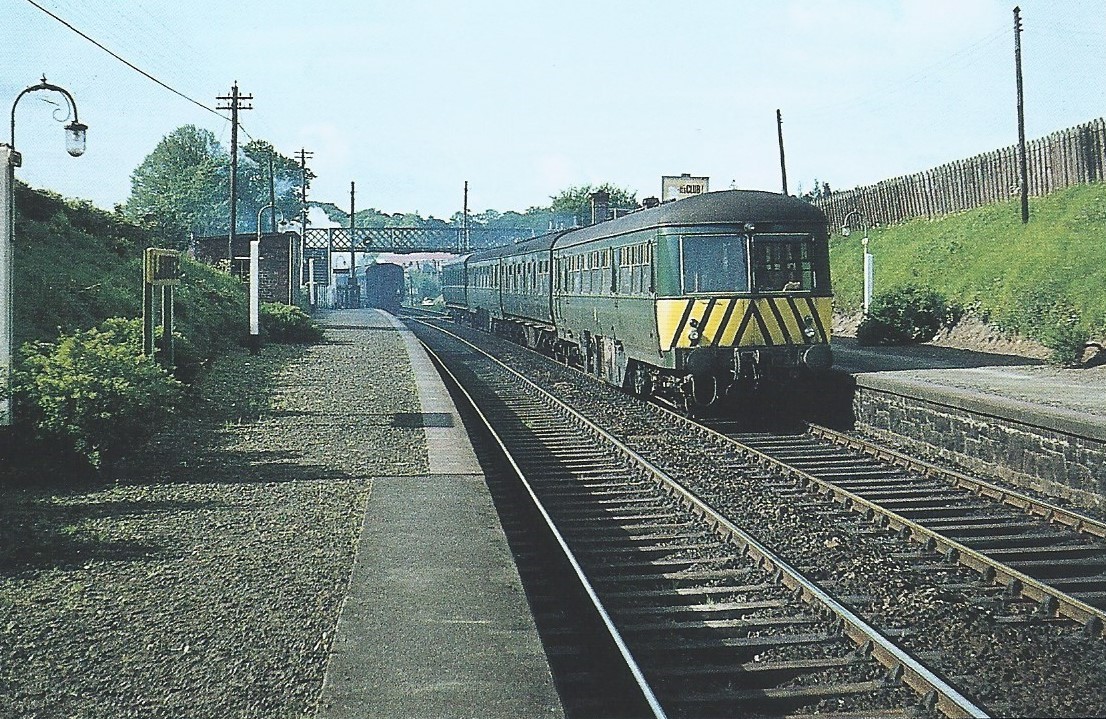
.thumb.jpg.619b7e43fcb01ddf7c110aacc1ea31d3.jpg)
